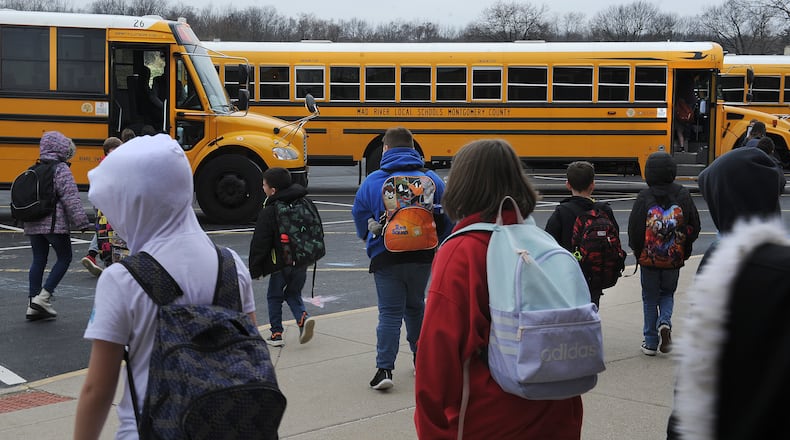Ohio’s public school enrollment has declined in the last 20 years due to a lower number of births and population shifts, like students moving out of the state. But precautions around the pandemic — from parents objecting to masking, to parents objecting to their kids doing in-person learning — also resulted in parents pulling kids out of school to homeschool or enrolling their kids in private schools.
For some Dayton-area school districts, declines were sharper. Dayton Public Schools, for example, saw enrollment decline by 2.8% between school year 2021 and school year 2022, the largest decline among the large city public school districts in the state, according to Fordham’s data. Cincinnati schools also saw a large decline of about 2.5%.
The Dayton school district lost about 10% of its student population between the 2019 and 2022 school years, according to a Dayton Daily News analysis of Ohio Department of Education data. DPS did not respond to requests for comment.
Aaron Churchill, the Fordham Institute researcher who conducted the analysis, said many of the declines for school districts were significant. Half of a percent or so is more standard, he said.
Churchill said he was surprised that more districts didn’t see an increase in enrollment as the pandemic began to subside and schools began to not require masking. But families weren’t continuing to enroll their kids in public school, Churchill noted.
“You don’t really see any sort of upward trend, at least not right now,” said Churchill, the Ohio research director for Fordham.
He suggested that national trends, like more parents homeschooling and more parents enrolling kids in private schools or nontraditional public schools, were also to blame. Some students may have dropped out entirely, Churchill said.
“Homeschooling has gone up quite a bit in the last couple years, so that explains some of the decline,” he said.
Huber Heights schools had many students move to homeschooling during the pandemic, according to Cassie Dietrich, spokeswoman for the school district. The number of families who have applied to homeschool their kids has steadily increased since 2010, she said. In 2019, the district had 253 applications. In 2020, the district saw 329 applications.
Huber Heights, which is the most rapidly growing city in the core Dayton region according to the 2020 Census, did not see the same increases in their schools. Dietrich noted that much of the growth in the city of Huber Heights has come in the northern region, where many students end up going to Bethel schools.
The Bethel Local school district saw nearly a 29% jump in student headcount between 2019 and March 2022, according to a DDN analysis. Huber Heights schools saw a decline of about 1% in the same time period.
Dietrich said the Huber Heights City Schools are still expecting more students to enroll. The district has already created a forecasted student plan, noting where the new housing developments will be and projecting the number of students they could bring in.
“We have also mapped out which elementary buildings students in new developments will attend in order to level student-to-teacher ratios in each building and ensure we are not over capacity anywhere in the district,” she said.
Mad River superintendent Chad Wyen said the district lost about 263 total students between the start of the pandemic and now. As of March 4, 2022, the district listed 3,573 students enrolled, according to the Ohio Department of Education. Many students left the state or left the country, Wyen said.
“Some was related to the influence (Wright-Patterson Air Force Base) has on the district, others were students who went back to their family’s home country,” Wyen said. “There also has been a slight uptick of students whose parents decided to homeschool them when the pandemic began, or withdrew to participate in an online charter school.”
About the Author


